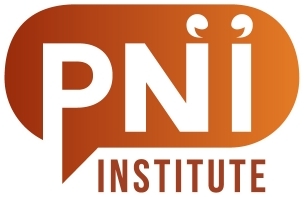Last Friday, in Preston, UK, I was helping to teach engineers ‘how to facilitate TRIZ workshops’ as part of Oxford Creativity’s five day TRIZ training course.
Priding ourselves in maintaining as experiential a day as possible, after an energiser, we start with an hour of PNI in the form of a story circle.
In TRIZ there are 40 Inventive Principles (ways in which a ‘system’ can be improved), the second of which is ‘Taking Out’ or more often referred to as ‘Less is More’. In demonstrating how to introduce yourself, the method and the materials, I make a very conscious effort, not in what I say, but in what I leave out. By avoiding examples of what a story is or what response I am expecting, I always hope to maximise the divergence of perspectives and bring out a wider range of responses, and therefore map more of the previously unseen narrative landscape.
Today was no exception, in this circle, six participants enthusiastically joined in.
I try not to engage at all with the stories as they are being shared, for fear of ‘leading the witness’, but one story emerged that had me enthralled immediately and almost spontaneously applauding at the end.
It went something like this:
When I started my PHD we were all expected to do a presentation to the whole of the Department explaining the subject and methods of our research.
I had never previously given such an important presentation to so many people so I packed every fact, reference and idea into a PowerPoint fit for the world class researcher I hoped to become one day.My sponsor wasn’t particularly critical of my efforts but simply explained that I should remove about 75% of the material to fit it into the 30 minutes I would be allocated.
I dutifully removed all the repetition, non-essentials, excess charts and got it down to a nice tight 10 slides.
At the next review, my sponsor said this was great, but that I should now remove three essential facts from my presentation. He explained that there would be 15 minutes of questions at the end of each talk and this would help direct the audience questions towards areas needing to be further clarified or explained.
I reluctantly removed three important facts, loaded my slides and gave my presentation to a packed lecture theatre. At the end, I invited questions, and all three ‘missing essentials’ were questioned, for which I was exceptionally well briefed because they were areas I had originally prepared to talk about anyway.
At the end of the day I was awarded a certificate for the best presentation, and commended for how I had dealt with the questions so professionally.
He then gave this story a title, “Learning from the experienced”.
So, in not more than eight words, clearly written, what do you get from this story?
[Please leave your first thoughts in the comments field below]

Great example of applying a TRIZ principle in PNI. For me it makes clear once more that PNI itself is nice, but taking in insights from other methods and approaches will make it even stronger.
Your story reminds me BTW of my own PhD. I had decided that in order to make it more readable for non-experts my thesis should be shorter than 100 pages and should contain a comprehensible and/or attractive figure at least every two pages.
You can almost predict what happened: the audience and readers outside or near the boundary of the field loved it, while the die-hard experts in the field thought my thesis was on the boundary of being scientific 🙂 because it was so thin and contained so many figures.
With my professors supporting me – like the one from your story – I had no doubt that eventually my thesis would fall inside the boundary between scientific and too popular. I’m still glad I was near that boundary as it still helps to convey insights from my thesis into the PNI approach.